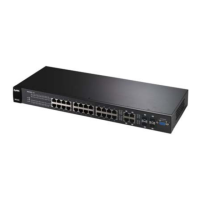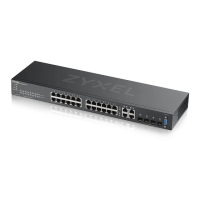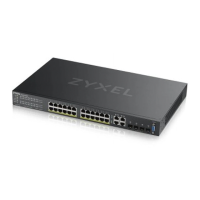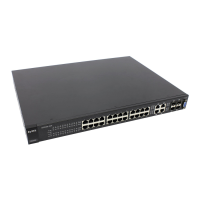
Do you have a question about the ZyXEL Communications GS2210 Series and is the answer not in the manual?
| Product Series | GS2210 Series |
|---|---|
| Layer | Layer 2 |
| Storage Temperature | -40°C to 70°C |
| Switch Type | Managed |
| SFP Slots | 2 or 4 SFP slots (depending on model) |
| VLAN Support | Yes |
| Quality of Service (QoS) | Yes |
| Management | Web GUI, CLI, SNMP, RMON |
| Operating Temperature | 0°C to 40°C |
| Power Supply | 100-240V AC, 50/60 Hz |
| Features | IGMP Snooping |
| Rack Mount | Yes |
Describes the methods available for managing the switch, including Web Configurator, CLI, FTP, SNMP, and Cluster Management.
Details the installation scenarios for the switch, including desktop and rack-mounting options.
Provides instructions on how to mount the switch on a standard EIA rack using a rack mounting kit.
Provides instructions on how to access the switch's web configurator and log in using default credentials.
Explains how to reload the factory default configuration file or reset the switch to factory defaults.
Guides through the process of creating a VLAN and configuring port membership for network segmentation.
Details how to configure the switch's management IP address for network access and management.
Explains how to configure general settings like system name and time for the switch.
Guides on configuring the switch IP address, default gateway, and management VLAN ID.
Provides information on Power over Ethernet (PoE) status, including power allocation and priority levels.
Details how to configure IEEE 802.1Q VLAN parameters for the switch.
Explains how to configure a static VLAN for the switch by defining VLAN parameters and port settings.
Describes how to set up port-based VLANs where packet forwarding is based on destination MAC address and associated port.
Explains how to configure static MAC addresses for a port to reduce broadcasting needs.
Guides on how to activate one of the STP modes (RSTP, MRSTP, MSTP) on the switch.
Details how to configure RSTP settings for the switch.
Provides instructions on how to upgrade the switch firmware to the latest version.
Explains how to use the diagnostic screen to ping IP addresses, run traceroutes, and perform port tests.
Provides guidance on troubleshooting power issues, hardware connections, and LED behavior.
Offers solutions for common issues related to accessing the switch and logging in.











